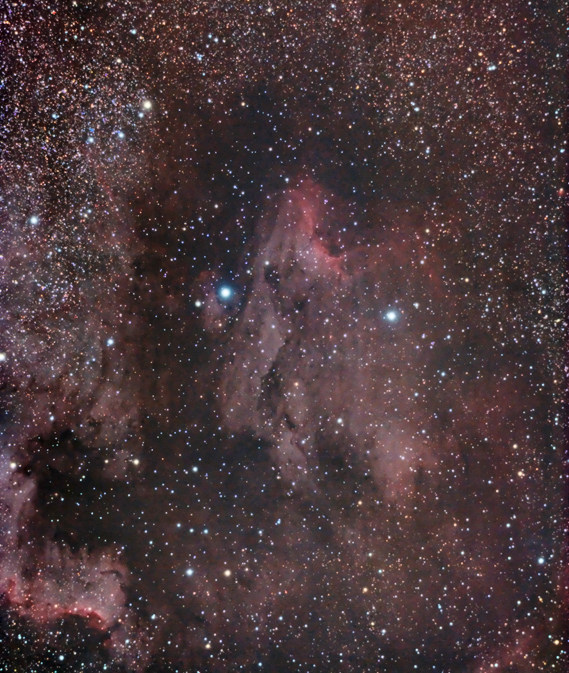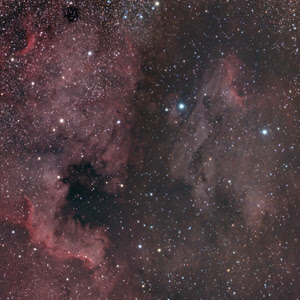 |
| Above:
IC 5070, The Pelican Nebula Imaged Tues., Sept
4, 2013 17 subs 5 Minutes Each totaling 1 Hour, 25 Minutes |
| PHOTO DETAILS Scope: Explore Scientific ED80 with WO Flat III 0.8x FR/FF Mount: Skywatcher HEQ5 Pro Synscan Guiding: Meade DSI Pro II and PHD Guiding Guide Scope: Orion Mini 50mm Camera: Canon EOS 450D (Stock) ISO: 1600 Exposure: 1 hour 25 minutes (17 x 300s) Processing Software: Calibration and Stacking in Deep Sky Stacker, Levels/Curves/Enhancements in Photoshop Support Files: 15 bias, 15 darks |
| Thanks to my IDAS
LPS filter, I have been able to image in my backyard in the city with
decent results. Before I had the filter, a 3 minute exposure would be so
washed out, that I could not make out the subject I was imaging until
making a levels adjustment in Photoshop. Now, I can take 5 minute
exposures at 1600 ISO with minimal effects of light pollution. Emission Neblulae like the North America Nebula, Pelican and California really don't show up well with a stock camera, but I have tried my best to pull out as much nebulousity as possible anyway. As the nights get cooler and longer, I will be switching my focus to fall objects in the coming weeks:) |
 North America Nebula & Pelican Nebula/span> |

The Pelican looks awesome! I can't believe this was taken from the city! ...and like you said, your camera isn't even modified.
ReplyDeleteThanks
Greg
Now that I look at it again it looks muddy, probably a combination of stretching the data too far and the LP. But thanks Greg!
ReplyDelete